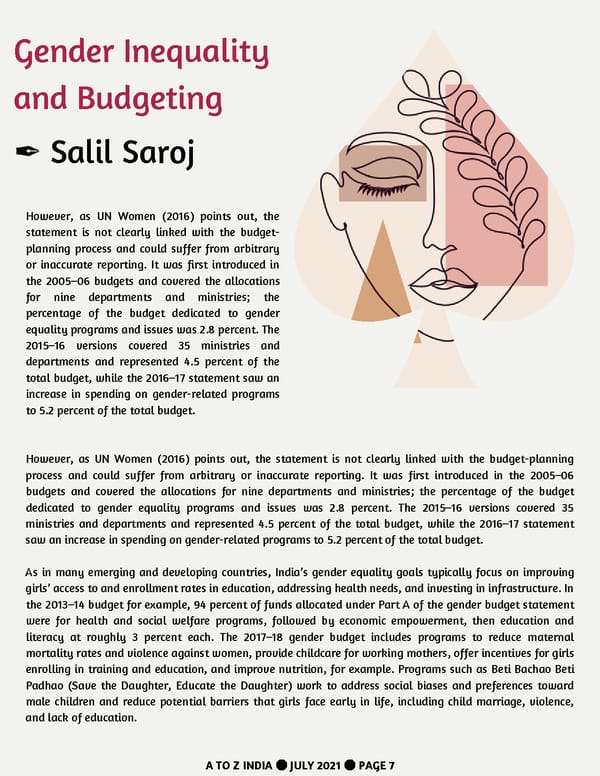Gender Inequality and Budgeting ✒ Salil Saroj However, as UN Women (2016) points out, the statement is not clearly linked with the budget- planning process and could suffer from arbitrary or inaccurate reporting. It was first introduced in the 2005–06 budgets and covered the allocations for nine departments and ministries; the percentage of the budget dedicated to gender equality programs and issues was 2.8 percent. The 2015–16 versions covered 35 ministries and departments and represented 4.5 percent of the total budget, while the 2016–17 statement saw an increase in spending on gender-related programs to 5.2 percent of the total budget. However, as UN Women (2016) points out, the statement is not clearly linked with the budget-planning process and could suffer from arbitrary or inaccurate reporting. It was first introduced in the 2005–06 budgets and covered the allocations for nine departments and ministries; the percentage of the budget dedicated to gender equality programs and issues was 2.8 percent. The 2015–16 versions covered 35 ministries and departments and represented 4.5 percent of the total budget, while the 2016–17 statement saw an increase in spending on gender-related programs to 5.2 percent of the total budget. As in many emerging and developing countries, India’s gender equality goals typically focus on improving girls’ access to and enrollment rates in education, addressing health needs, and investing in infrastructure. In the 2013–14 budget for example, 94 percent of funds allocated under Part A of the gender budget statement were for health and social welfare programs, followed by economic empowerment, then education and literacy at roughly 3 percent each. The 2017–18 gender budget includes programs to reduce maternal mortality rates and violence against women, provide childcare for working mothers, offer incentives for girls enrolling in training and education, and improve nutrition, for example. Programs such as Beti Bachao Beti Padhao (Save the Daughter, Educate the Daughter) work to address social biases and preferences toward male children and reduce potential barriers that girls face early in life, including child marriage, violence, and lack of education. A TO Z INDIA ● JULY 2021 ● PAGE 7
 A TO Z INDIA - JULY 21 Page 6 Page 8
A TO Z INDIA - JULY 21 Page 6 Page 8